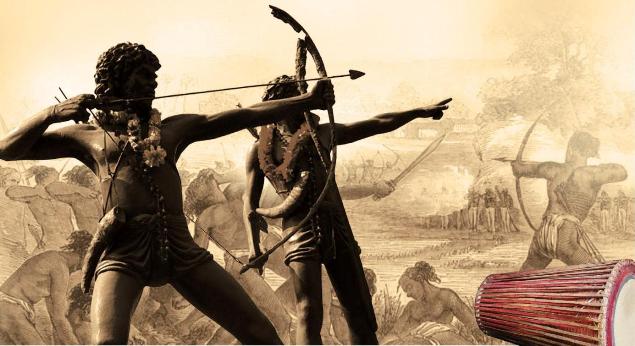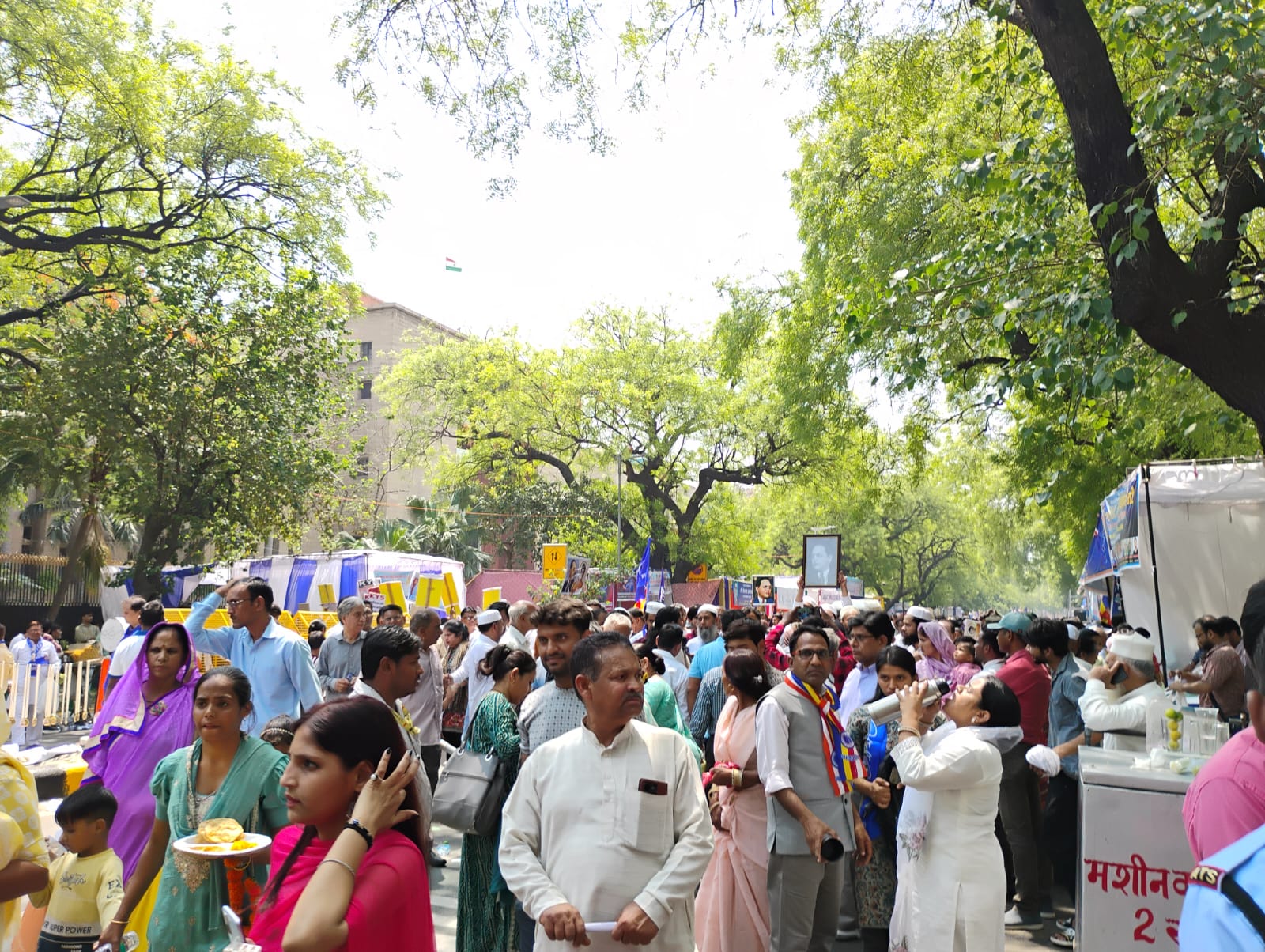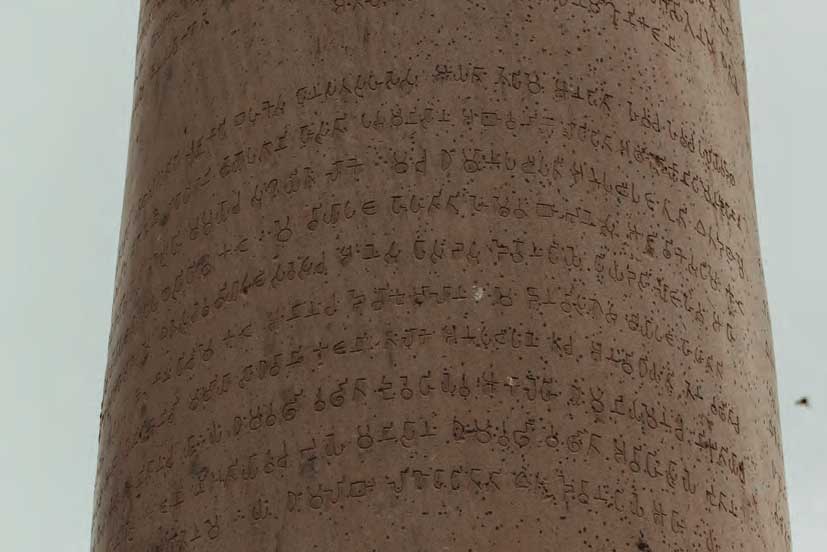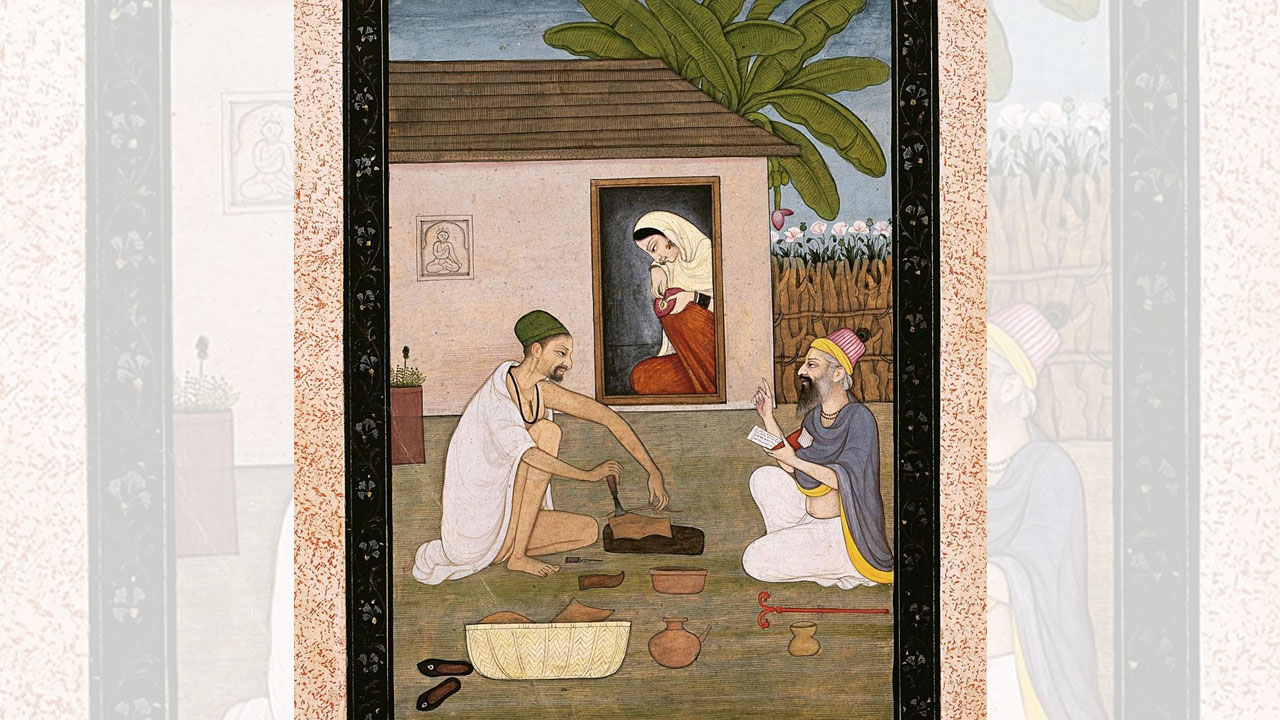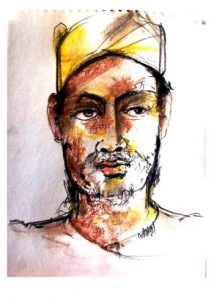
Ambedkar considered three people his gurus and Kabir was the first and the foremost among them. Clearly, Kabir had influenced him greatly. But what in Kabir had impressed him? What role had Kabir played in shaping the personality of Ambedkar? It is said that Ambedkar’s family was Kabirpanthi. He must have come to know about Kabir in his childhood. But it is difficult to say whether Ambedkar was introduced to Kabir, the saint or Kabir, the philosopher. It is also not clear whether Marathi translations of Kabir’s works were available then. Kabir’s complete works were first published in Hindi in 1930 under the editorship of Babu Shyamsundar Das. But it is more likely that Ambedkar was introduced to the questioning, philosopher Kabir through One Hundred Poems of Kabir, a book published by Macmillan, London in 1915, which contained 100 poems of Kabir translated into English by Rabindranath Tagore. When this book was published, Ambedkar was a student of political science in London. He was a voracious reader, always on the lookout for new books. Needless to say, this book must have had a profound influence on him.
But it wasn’t just Kabir’s philosophy that drew Ambedkar towards him. The most important reason for Kabir’s appeal to Ambedkar was the identical social and religious ambiences of the times in which they lived. That was why Kabir’s personality gave a new edge to Ambedkar’s leadership abilities. We need to dwell a little more on this factor. Though 500 years separated Ambedkar and Kabir, if a student of history carefully compares the situations prevailing in India in the 15th and 20th centuries, he will realize that things came full circle in these five centuries. It was as if history was repeating itself.

Let us first try to understand Kabir’s times. Kabir was a poet and thinker of the 15th century, born into a poor Julaha family. At the time, Julaha was an untouchable caste. Muslim rule had become established during Kabir’s lifetime. Islam had opened many new doors for the Shudras and the Ati-Shudras. The madrasas were not out of bounds for them, and influenced by the message of love and equality of the Sufi saints, the backward castes were embracing Islam. At the same time, the brahmanical counter-revolution had emerged. It was aimed at saving Hinduism from the onslaught of Islam. Advaitvad, which Adi Shankaracharya had propounded in the 11th century to counter Islam, had taken the form of a powerful Vaishnav Bhakti Movement by the 15th century. Ramanuj was the founder of this movement. One of his disciples, Ramanand, had shifted base from south India to Kashi (Varanasi) to convert Dalit castes to Vaishnavism. To stop Dalits, especially Chandals, from converting to Islam, he turned them into adherents of Vaishnavism by giving them the mantra of “Ram Ram”. He did this in the most bizarre way. Ensuring that his body did not touch Dalits’ bodies, he whispered the word Ram twice into their ears, which, according to him, made them Vaishnavites.
Though Swami Ramanand used to say, “Jaatpaat puche nahi koyee, Hari ko bhaje, so Hari ka hoyee” (Caste is of no consequence, the one who worships god, belongs to him), the fact was that the Vaishnav sect believed in the Varna system. It did not practise what it preached. That was why conversion to Vaishnavism did not translate into any change in the social status of the Dalits. They were not allowed entry into the sanctum sanctorum of the temples. They could have a glimpse of their Thakur (Krishna) from a distance. One should read Do Sau Chaurasi Vaishnavan Ki Varta to know what status the Vaishnav sect accorded to the Dalits. The book talks of freeing Dalits from the practice of eating the leftovers of Brahmins! The condition of the Dalits who had joined the Shakt sect was no different. Sympathizing with Shakts and Vaishnavs, Kabir wrote:
Shakat Brahman na milo, Baisno milo chandal
Ank maal de bhetiye, mano mile Gopal (Kabir Granthanvali, p 28)
Kabir was saying, “Don’t meet the Shakts and the Vaishnavs. But if you come across a Chandal Vaishnav, embrace him as if you have met Gopal (Krishna).” These lines are satirical but they also contain a message: “Love your Dalit brother, even if he has lost his way.”
For Kabir, there were two power centres in society – the Mullah and the Pandit. Coincidentally, Ambedkar held the same belief. Mullahs and Pandits were the undisputed leaders of their respective communities and no one dared to question them. Kabir could see how the Pandits and the Mullahs were feeding bunkum to the masses in the name of Varna system – haj, puja, namaz, pilgrimage and the other world – and how the feudal lords, moneylenders and traders had turned the life of the common man – fed on this nonsense – into hell by exploiting them. Kabir could see through the sham of the Pandits and the Mullahs. He could realize that there was a wide chasm between what they preached and what they practised.

Karl Marx had said: “The ideas of the ruling class are in every epoch the ruling ideas, ie the class which is the ruling material force of society is at the same time its ruling intellectual force.” Similarly, Kabir could see that the Mullahs and the Pandits were not only the ruling material force but also the ruling intellectual force of society. He understood that the people needed a new intellectual stream based on the principle “seeing is believing”. Kabir held dialogues with both the Mullahs and the Pandits, but to no avail. So, he turned to the principle of “neither Hindu, nor Muslim” and, negating both the religions, provided a revolutionary leadership to the people. He developed his own aesthetics, his own way of seeing religion and society, which was in sharp contrast to the worldview of the Quran and the Vedas and Puranas. He wrote: “Allah Ram ka gham nahin, taham ghar kiya Kabir” (ibid p 411). He says that Vaishnav’s deity is Raja Ram, who is an incarnation of Lord Vishnu, and so unacceptable to him. In his view, both Ram and Allah are “sagun” (having attributes). Kabir then came up with the revolutionary concept of “Nirgun” (attributeless) that militated against the belief in the Varna system and in the other world. He said, “Hamra jhagra raha na kou, Pandit, Mullah chhode dohu.” (ibid p 206). He realized that no revolution is possible without abandoning both the Pandit and the Mullah. This aspect of Kabir’s thought influenced Dr Ambedkar. In the 20th century, Dr Ambedkar was facing the same challenges that Kabir had faced in his time. That was why Kabir’s concept of “seeing is believing” gave him the vision he was looking for. This third stream of criticism became the foundation of Bahujan thought and Kabir was undoubtedly its proponent. It formed the point of departure of Ambedkar’s thoughts.
Kabir never accepted the Brahmin as his leader though the Brahmin considered himself the teacher of the entire world. “Brahman guru jagat ka, Sadhu ka guru nahin, urjhi-purjhi kar mari rahya, charion veda mahin” (ibid p 28). At the time, this was the biggest revolution in the realm of ideas, and it touched Ambedkar deeply. Though Ramanand was no longer alive when Kabir lived, Ramananda’s ideology was, and it had given rise to big mutts (monasteries). But Kabir attacked these mutts mercilessly and ensured that no “sagun” mutt of Dalits came into existence. This revolutionary step influenced Ambedkar. In the 20th century, treading the path of Kabir, Ambedkar too followed the principle of “na Hindu, na Musalman” and did not accept the leadership of anyone, including Gandhi. He attacked both the Hindu and Muslim establishments with equal ferocity. That was why he could caution the Dalits against accepting the leadership of either the Hindus or the Muslims.
Dr Ambedkar’s quest for a religion that conformed to this belief ended in Buddhism. It was Kabir’s logic and reason that led him to Buddhism. He could never develop respect for any Hindu saint. It was Kabir’s Nirgunvad that took Ambedkar to atheism. Some may find this assertion unbelievable but it is true. Kabir’s Nirgunvad may, on the surface, appear theological but in reality it is atheistic. It is the only theology that rejects the concepts of Heaven and Hell, of rebirth, of salvation, incarnation, puja, pilgrimage and fasting and has no faith in any scripture. Which other theology does so? Kabir’s Nirgunvad urges the people not to believe in fate and scriptures. It says:
Kaun mare, kaun janme bhai,
Sarag, narak kaune gati payee,
Panchtat avigat thein utpana, ekai kiya nivasa,
Bichure tat phiti sahaji samana, rekh rahi nahin aasa,
Jal mein kumbh, kumbh mein jal hai, bahari bhiter pani,
Phute kumbh jal jalhein samana, yah tat katho giyani,
Aade gagna, ante gagna, madhe gagna bhai,
Kahe Kabir karma kis laage, jhoothi sank upayee. (ibid p 80)
Nirgunvad influenced Ambedkar deeply. He discovered the same kind of logic in Buddha’s philosophy, too. Babasaheb saw in the following verse of Kabir the preaching of Buddha to Kalams, in which Buddha had emphasized realized knowledge rather than scripturalism and individualism.
Mera tera manua kais eek hoyee re,
Mein kahta hon aakhan dekhi,
Tu kahta kagad ki lekhi (Kabir p 247)
Here, “kagad lekhi” negates scripturalism and individualism both while “aakhin dekhi” approves of realized knowledge. This verse of Kabir was the foundation of Ambedkar’s political leadership – using which Ambedkar brought Gandhi and the Congress face-to-face with the socio-economic status of the Dalits.
Kabir is present in Ambedkar’s Annihilation of Caste speech from the beginning to the end. The irrefutable logic used in the speech by Ambedkar to attack the caste and the Varna system may make one feel that five hundred years on, Kabir was speaking in his new avatar.
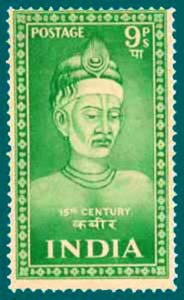
“When the god does not have any varna, how can men have one?” Kabir would argue. He put forth a very scientific argument: “Nati saroop varna nahi jake, ghati-ghati rahyo samayee”. Kabir said, what Buddha had said centuries earlier: “Ek boond ek malmutra, ek cham ek guda; ek jot se sab utpanna, ko Brahman ko Suda”. When Ambedkar said that no caste is pure; when he said that there was an admixture of alien blood not only among the warrior classes – the Rajputs and the Marathas – but also among the Brahmins and so no one can be Brahmin or Shudra; when he said that Brahmins and the Untouchables belong to the same stock; was he not taking Kabir’s arguments forward? When Ambedkar asked the Vedas and the Shastras to be destroyed with dynamites, was he not repeating what Kabir said to Brahmins “Ved-kiteb chadi deu pande, ee sab man ke bharma” (ibid p 242). When Ambedkar criticized Hindu saints for saying that god and humans were equal but not raising their voice against the inequality between man and man perpetuated by the caste system, was he not echoing Kabir who said that one who had not given up his caste and varna couldn’t perform ‘bhakti’:
Jab lang naata jati ka, tab lang bhakti na hoye,
Bhakti kare koyee surma, jati baran kul khoye,
Jahan bhakti wahan bhesh nahin, varnashram hoon nahin,
Naam bhakti jo prem son, sau durlabh jag mahin
(Kabir Samagra p 404-05).
Kabir never supported the spiritualism that considered this world an illusion and the other world as truth. There are two streams of philosophical thought in brahmanical spiritualism – Dvaitvad (Dualism) and Advaitvad (Monism). Dvaitvad argues that the soul and the Brahma are different while Advaitvad says that they are one. But both talk about the other world. It would be interesting to find out what Kabir’s spiritualism was and to what extent it influenced Ambedkar.
For Ambedkar, social justice was the touchstone for any philosophy or spiritualism. This touchstone had three parameters – liberty, equality and fraternity. He had tested all religions – especially Hinduism – on this touchstone and discovered that not only Hinduism but also Islam and Christianity did not pass muster. His book Philosophy of Hinduism underlines this fact. Kabir’s emphasis is on love. Without love, there can be no equality, no liberty and no fraternity. It was Kabir who declared that it is useless being tall like a date palm, which does not provide shade to the passerby and the fruits of which hang too high to pick. It was Kabir who said, “Preme ko premi mile, tab sab vish amrit hoyee.” Only love can convert the poison inside a person into the nectar of life. Then, people will not only grieve for their dead but also for slaves – “Muon ko kya roiye, jo apne ghar jaye; roieye bandivan ko, jo hate hat bikay” (Kabir Granthavali, p 63). Kabir had no patience for people who were proud about Brahma and subjectivism but thought of humans not as humans but as Shudras and mlecchas.
“Bahut garab garbe sanyasi, brahmacharit nahin paasi; sudra maleccha base man mahin, aatamraam su cheenha nahin” (ibid p 112). These lines are very popular among Dalits. Kabir had transformed the majority population of the country. Today, if Ram forms the part of names of most Dalits, it is because of the influence of Kabir and Raidas. This influence was so deep that “Ram” figured in the name of Babasaheb’s father too. This “Nirgun” Ram of Kabir created a repulsion for the “Sagun” deities adorning Hindu temples. But who could predict that in the 16th century, Goswami Tulsidas, by hailing Thakur ji, would convert Kabir’s Nirgun Ram into Sagun Ram and the moneybag patrons of Brahmanism would loosen their pulse strings to promote it.
Ambedkar’s critics might say that nowhere in his works he has quoted Kabir. But then, he has not quoted Phule either. But did he not consider Phule his guru?
References:
Kabir Granthavali, Shyam Sunderdas, Nagri Pracharini Sabha, Kashi, Edition Samvat 2034
Kabir, Hazariprasad Dwivedi, Rajkamal Prakashan, New Delhi, edition 1993
Kabir Samagra, Vol I, Prof Yugeshwar, Hindi Pracharak Sansthan, Varanasi, edition 1995
Forward Press also publishes books on Bahujan issues. Forward Press Books sheds light on the widespread problems as well as the finer aspects of Bahujan (Dalit, OBC, Adivasi, Nomadic, Pasmanda) society, literature, culture and politics. Next on the publication schedule is a book on Dr Ambedkar’s multifaceted personality. To book a copy in advance, contact The Marginalised Prakashan, IGNOU Road, Delhi. Mobile: +919968527911.
For more information on Forward Press Books, write to us: info@forwardmagazine.in


